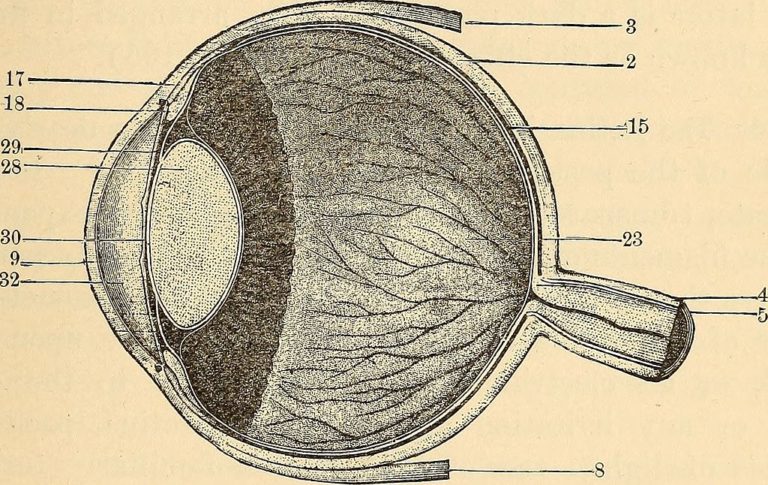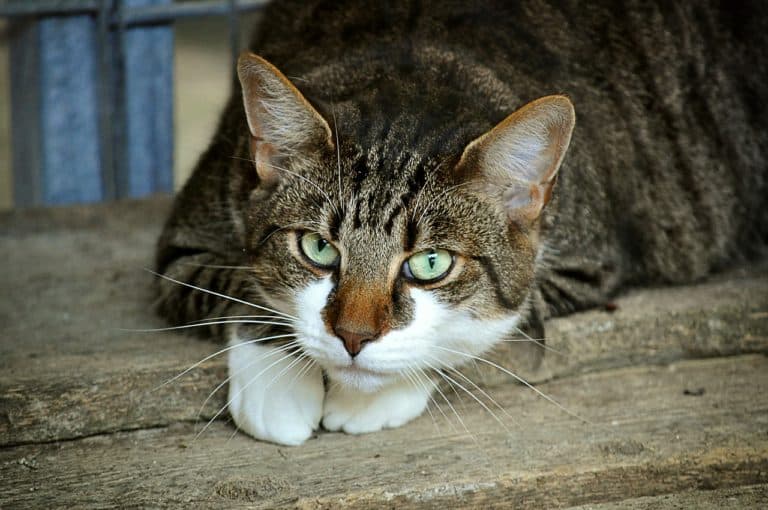Bleeding in a cat’s eye can be an alarming thing to witness. There are different types and causes of bleeding in the eye. It’s important to get your cat examined by a vet if you notice or suspect any bleeding. Below we cover some of the reasons why this can occur.
Subconjunctival Hemorrhage
The conjunctiva is a membrane that covers the insides of the eyelids and the whites of the front of the eyeball. Blood vessels can rupture beneath the conjunctiva and bleed, leading to subconjunctival hemorrhage. According to the MSD Veterinary Manual, this condition can be caused by “trauma, a blood disorder, or certain infectious diseases” and that the “condition, by itself, does not require treatment, but close inspection is necessary”.
Hyphema
Hyphema is a medical condition that occurs when blood collects in the front, or anterior, chamber of the eye. Hyphema can be diagnosed by visually inspecting for blood in the eye’s anterior chamber, checking the fluid pressure in the eye (intraocular pressure), or inspecting for swelling or lesions in the cornea (corneal edema or lesions). The cornea is the transparent covering over the iris, pupil, and anterior chamber of the eye. Injury or trauma, parasitic infection, retinal detachment and glaucoma are some common underlying causes for hyphema. Eye drops containing corticosteroids or atropine, as well as surgery, may be suggested by your vet to treat hyphema. There may be separate treatments to manage the underlying causes of the hyphema as well (e.g. glaucoma treatment if the glaucoma is causing the hyphema).
Retinal Hemorrhage
The innermost lining of the eye is called the retina. This thin layer of tissue receives light that has passed through the lens and converts it into signals for the brain to decipher what is being seen. Retinal hemorrhage is bleeding along the retina and can be confirmed with an ophthalmic exam. Just like hyphema or subconjunctival hemorrhage, retinal hemorrhage can be caused by trauma or injury. High blood pressure (hypertension), diabetes and blood disorders are some other causes of retinal bleeding. Retinal hemorrhage can be accompanied by a retinal detachment, which is when the retina layer detaches from the choroid coat, which is the middle layer of the eyeball. Cats with retinal hemorrhage are usually hospitalized, and sometimes reattachment surgery is performed.
Retinal Detachment
Retinal detachment can occur with retinal hemorrhage. The ‘wall’ of the eyeball is made up of the sclera (the whites of the eyes), the choroid (the middle layer) and the retina (innermost layer). When the retina detaches from the choroid this is retinal detachment. As mentioned previously, it can accompany retinal bleeding. Trauma, high blood pressure, tumors and inflamed blood vessels in the eye can lead to retinal detachment. Diagnostic tests for retinal detachment include ophthalmoscopy, ultrasonography, electroretinography and blood pressure measurements. This condition can lead to vision loss and blindness in cats. Treatment can include medication or reattachment surgery, depending on severity. As there can be underlying causes of retinal detachment such as glaucoma, further treatments for those underlying conditions may be required as well.
Anatomy of a cat’s eye
So you might be confused after reading about the sclera, retina, choroid and all those other anatomical terms! Fear not – the diagram below can help you understand what they all are. Have a look at the diagram and the legend below it describing what each number means (we’ve only included the most relevant ones).

Figure: Vertical Section of the Eyeball, and Part of the Optic Nerve via Wikimedia Commons
- 2 – sclerotic coat (sclera)
- 9 – the cornea
- 15 – the choroid coat (choroid)
- 23 – branches of central artery of the retina
- 28 – the crystalline lens
- 29 – the iris
- 30 – the pupil
- 32 – anterior chamber




